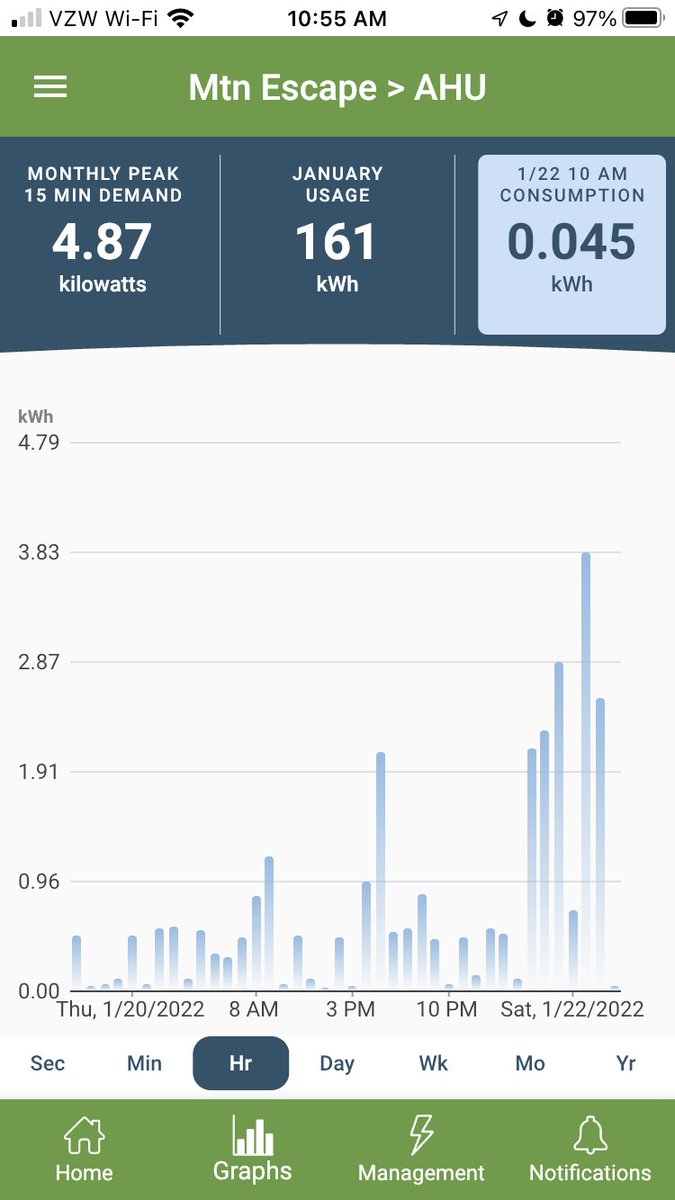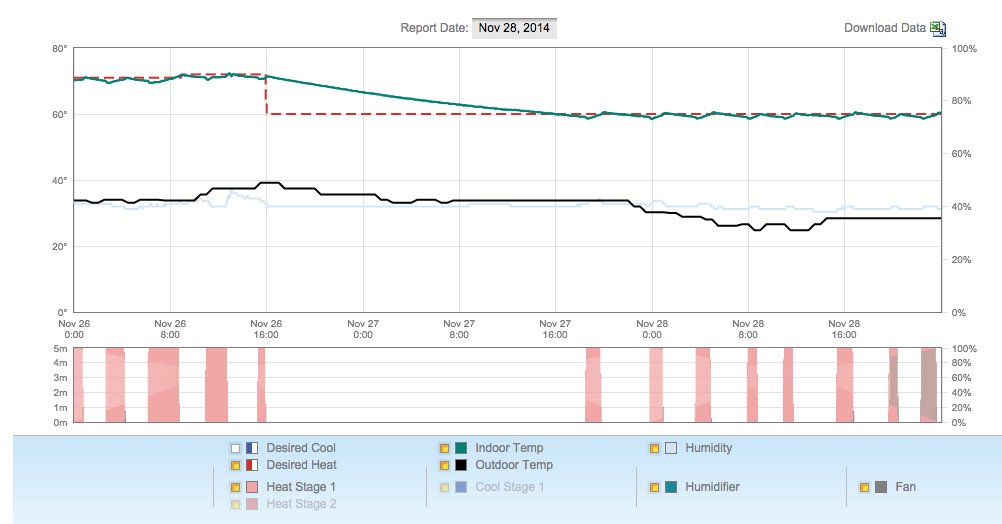
Thread 🧵
20 kWH of battery goes a long way.
Beyond the heat pump usage, I needed 14.4 kWH of resistance to get through a very cold night here, at design temp 10F.
This is usage from my house last night. Bosch heat pump set to 2 tons max. 5 kw backup on the air handler.



20 kWH of battery goes a long way.
Beyond the heat pump usage, I needed 14.4 kWH of resistance to get through a very cold night here, at design temp 10F.
This is usage from my house last night. Bosch heat pump set to 2 tons max. 5 kw backup on the air handler.




This is measured with an Emporia Vue energy monitor.
A heat pump uses about 1 kWH per hour per ton when running at 100% as mine has.
I’ve watched a number of client homes, 20-50 kWH is enough to load shift all of them so far to make up for resistance usage on cold days.
A heat pump uses about 1 kWH per hour per ton when running at 100% as mine has.
I’ve watched a number of client homes, 20-50 kWH is enough to load shift all of them so far to make up for resistance usage on cold days.
With batteries this size on homes, the existing grid can handle a lot of electrification with few upgrades.
Add 3-5% per year capacity expansion and concerns largely vanish.
Batteries still have a long way to go on cost curves (unlike hvac). Real focus here is needed.
Add 3-5% per year capacity expansion and concerns largely vanish.
Batteries still have a long way to go on cost curves (unlike hvac). Real focus here is needed.
Add rooftop solar at $1-1.50/watt much of the world pays and this gets easier still.
Glad to see DOE working on standardizing regulation for rooftop PV to lower hurdles there.
Still have to mobilize Hvac contractors to sell heat pumps in cold climates.
Glad to see DOE working on standardizing regulation for rooftop PV to lower hurdles there.
Still have to mobilize Hvac contractors to sell heat pumps in cold climates.
Further house details. Poorly insulated, 1150 sf. 1500 cfm50 blower door. ~3 ton/36,000 btu/10 kw load at design temp of 10F.
Will be close to 2 tons after upgrades. Fayetteville WV, barely inside US climate zone 5. Probably 4 now with updated weather data.
Will be close to 2 tons after upgrades. Fayetteville WV, barely inside US climate zone 5. Probably 4 now with updated weather data.
Here is daily usage for the last month on heat pump and resistance/air handler.
If this were a hybrid, there’d be no risk at all to the grid because gas/propane/oil would take over as needed at low temps.

If this were a hybrid, there’d be no risk at all to the grid because gas/propane/oil would take over as needed at low temps.


We still prefer all electric but it’s important to note hybrids are a decent compromise that reduce fossil use 30-90% depending on the home and system.
Note most of my resistance usage was just a few of the coldest hours, otherwise the heat pump did the work.
Note most of my resistance usage was just a few of the coldest hours, otherwise the heat pump did the work.
That compromise can be instituted today with very little risk to anyone: homeowners, contractors, manufacturers, etc.
We laid the hybrid option out in the Hybrid Heat Homes proposal.
It costs $10b to do nearly 50 million heat pumps. 7-10x payback.
bit.ly/3Hprogram
We laid the hybrid option out in the Hybrid Heat Homes proposal.
It costs $10b to do nearly 50 million heat pumps. 7-10x payback.
bit.ly/3Hprogram
We still prefer all electric though, and with more batteries and solar it becomes a relatively easy option, especially if they are predictably valued at resale.
Ignore the grid fear porn, we have tools to avoid massive problems. Let’s make it happen.
#electrifyeverything
Ignore the grid fear porn, we have tools to avoid massive problems. Let’s make it happen.
#electrifyeverything
Shouldn’t have to mention this, but your mileage may vary by climate, house performance, etc.
All this stuff can be figured out relatively easily, sizing equipment accurately is part of what the HVAC 2.0 Comfort Consult does. Wonder why we’re trying to scale it?
All this stuff can be figured out relatively easily, sizing equipment accurately is part of what the HVAC 2.0 Comfort Consult does. Wonder why we’re trying to scale it?
@threadreaderapp unroll please
• • •
Missing some Tweet in this thread? You can try to
force a refresh















